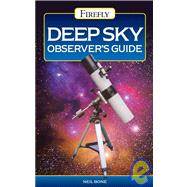
Neil Bone is a frequent lecturer for astronomical societies.
Wil Tirion is the world's foremost celestial cartographer.
| Introducing the deep sky | |
| The basics | |
| Galaxies | |
| Globular clusters | |
| Diffuse nebulae | |
| Open clusters | |
| Double stars | |
| Planetary nebulae | |
| Supernova remnants | |
| Taking it further | |
| A brief history of deep sky observingStar chartsDeep sky listings- Objects by constellation- The Messier list- Objects by magnitude- Objects by season | |
| Bibliography and resources | |
| Index | |
| Acknowledgements | |
| Table of Contents provided by Publisher. All Rights Reserved. |
The New copy of this book will include any supplemental materials advertised. Please check the title of the book to determine if it should include any access cards, study guides, lab manuals, CDs, etc.
The Used, Rental and eBook copies of this book are not guaranteed to include any supplemental materials. Typically, only the book itself is included. This is true even if the title states it includes any access cards, study guides, lab manuals, CDs, etc.